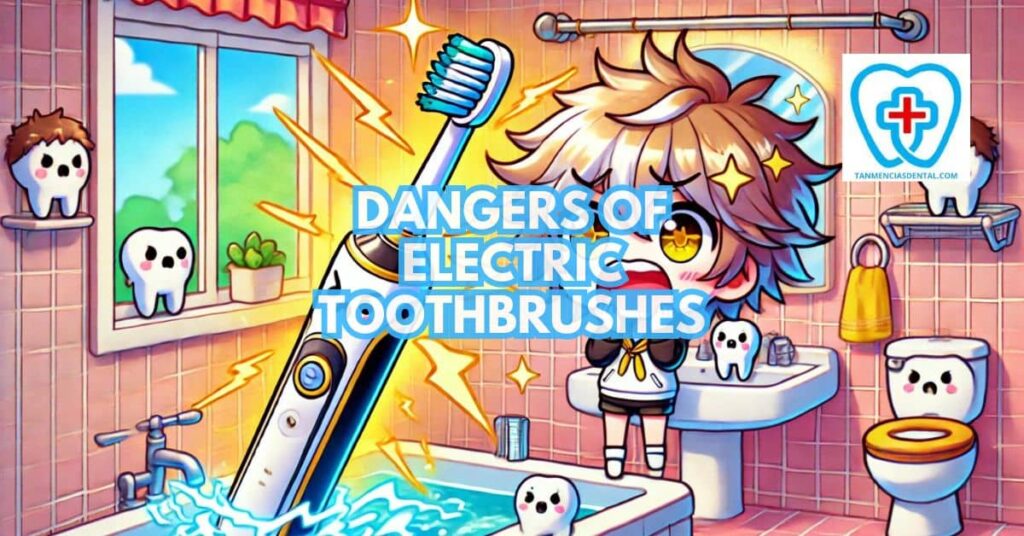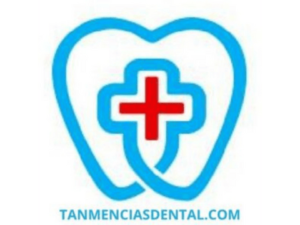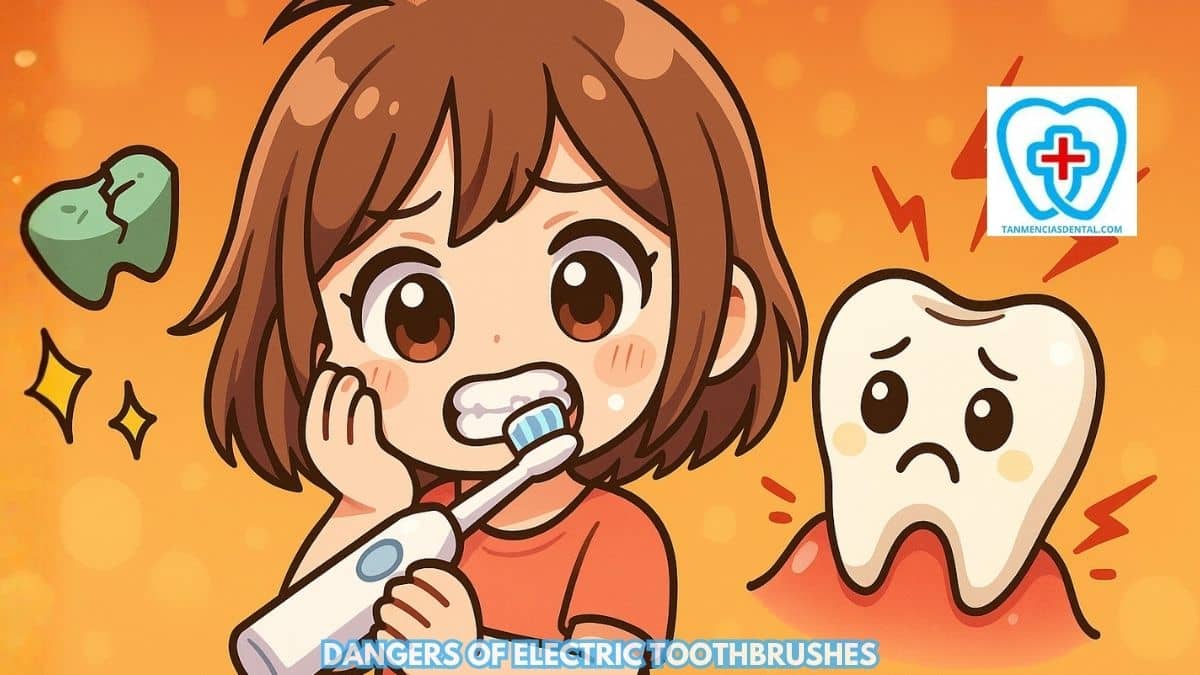Electric toothbrushes are often praised for making brushing easier and helping people clean their teeth more effectively.
Many users like their smart features, such as timers, sensors, and different speed options.
However, it is important to look closely at both the benefits and the dangers of electric toothbrushes before deciding if they are the right choice.
While these devices can support good oral care, they may also cause problems such as gum damage, enamel wear, or safety concerns if used incorrectly.
We’ll explain the main risks and help you decide whether an electric toothbrush is truly worth the hype.
1. Potential Gum Recession: A Growing Concern
One of the significant dangers of electric toothbrushes is the risk of gum recession.
Overbrushing with an electric toothbrush, especially when using high-speed settings, can cause the gums to pull away from the teeth.
This recession not only exposes the roots of the teeth but also increases the risk of infection and decay.
Proper brushing technique and selecting a toothbrush with softer bristles can help mitigate this risk.
It’s essential to be mindful of the pressure and duration of brushing to protect your gums.
🦷 Special Needs And Dental Checkups
2. Risk of Enamel Erosion: Is Your Smile at Stake?
Enamel erosion is a serious concern for people who use electric toothbrushes too aggressively.
The strong motion of these brushes, especially in models like the sonic toothbrush, can cause gradual wear on the tooth surface if used with too much force or abrasive toothpaste.
Enamel acts as a protective layer, and once it is worn away, it cannot grow back.
This damage to teeth often leads to sensitivity when eating or drinking hot and cold foods.
Using a soft brush head and setting the toothbrush to a lower speed can help protect the enamel from further erosion.
It is also important to choose a toothpaste that is gentle yet effective in cleaning.
Talking with a dentist can help you find safe brushing methods that clean well without harming the enamel.
🦷 How Recycled Toothbrushes Support Zero-Waste Lifestyle Goals
3. Electric Toothbrushes and Tooth Sensitivity
Many people notice increased tooth sensitivity after they start using an electric toothbrush.
The fast movements and strong vibrations can sometimes irritate the teeth and gums, especially if too much pressure is applied.
Poor brushing habits, such as pressing too hard or brushing for too long, increase the risk of damage to the enamel and soft tissues.
People who already have sensitive teeth may feel discomfort when the brush touches exposed areas near the gumline.
Using a model with a sensitivity mode or lower speed can make brushing gentler and safer.
A soft brush head can also reduce irritation while still cleaning effectively.
Paying attention to how your teeth and gums respond after brushing helps you know if adjustments are needed.
Changing brushing habits early can prevent long-term irritation and keep your mouth clean and healthy.
🦷 What is a Good Alternative to a Toothbrush for Maintaining Oral Hygiene?
4. Bacterial Buildup: A Hidden Danger
Electric toothbrushes can harbor bacteria if not properly maintained, leading to a hidden health risk.
The moisture retained in the brush heads provides an ideal environment for bacteria and mold to thrive.
To prevent bacterial buildup, it’s crucial to clean the brush head thoroughly after each use and allow it to dry completely.
Regularly replacing the brush head, as recommended by the manufacturer, is also important for maintaining hygiene.
Failing to address bacterial buildup can lead to oral infections and other health issues.
🦷 How Organic Toothbrushes Contribute to a Sustainable Oral Care Routine

5. Electrical Safety and Medical Devices
Electric toothbrushes generate small electromagnetic fields when they are in use or charging.
These fields are usually safe, but individuals with medical devices, such as pacemakers or hearing implants, should exercise extra caution.
It is best to read the medical device manual to check for any warnings about electric toothbrush use.
Keeping the charger and brush a safe distance away during use or charging can help prevent problems.
Talking with a doctor or dentist before using an electric toothbrush is a smart way to make sure it is safe for your situation.
🦷 Can You Brush Your Teeth With Dentures In?
6. Are Electric Toothbrushes Creating Brushing Dependence?
Electric toothbrushes may cause some users to become dependent on their automated features, potentially impacting their ability to brush effectively with a manual toothbrush.
This dependence might lead to a decline in manual brushing skills, especially in children who start with electric toothbrushes.
It’s important to maintain balance and ensure that proper brushing techniques are learned and practiced, regardless of the type of toothbrush used.
Switching between electric and manual toothbrushes occasionally can help maintain these skills.
The brushing technique is more important than the type of toothbrush used.
🦷 How Long to Wait After Brushing Teeth to Use White Strips?
7. Cost Comparison: Electric vs. Manual Toothbrushes
Electric toothbrushes are generally more expensive than manual toothbrushes, both in terms of initial purchase and ongoing maintenance.
The cost of replacement heads for electric toothbrushes can add up over time, making them a more significant investment.
In contrast, manual toothbrushes are affordable and widely available, with no additional maintenance costs.
When deciding between electric and manual toothbrushes, it’s important to consider your budget and whether the added features of an electric toothbrush justify the higher expense.
Effective oral hygiene can be achieved with either type, depending on personal preference and technique.
🦷 How to Choose the Best Toothpaste to Whiten Teeth with Braces
8. Environmental Impact of Electric Toothbrushes
Electric toothbrushes can affect the environment because their parts are harder to recycle than those of regular toothbrushes.
The built-in battery, plastic handle, and electronic motor all add to electronic waste when the brush reaches the end of its life.
When batteries or circuits are not disposed of properly, they can leak chemicals that harm soil and water.
Some brands now design brushes with rechargeable batteries or replaceable heads to lower waste and support better dental hygiene practices.
Choosing a long-lasting toothbrush and recycling through proper programs helps reduce harm to the planet.
Manual toothbrushes still create plastic waste, but their impact is smaller because they do not use electronics.
Caring for your toothbrush responsibly helps protect both your dental hygiene and the environment.
🦷 Is It Normal for Your Teeth to Wiggle with Braces?
9. Can Electric Toothbrushes Reach All Areas of the Mouth?
Electric toothbrushes are made to help clean teeth more effectively, but they may not reach every surface inside the mouth.
Narrow spaces between teeth and along the gumline can be hard for the brush head to access, leaving some plaque behind.
Even though electric models can remove plaque well compared to manual brushes, they still need help from flossing and interdental cleaning tools.
The angle and size of the brush head affect how well it can move around the mouth, especially in areas near the back teeth.
People with braces or crowded teeth may find it harder for the bristles to reach certain spots.
Using slow, gentle movements and holding the brush at the right angle can improve cleaning results.
Some users switch between different brush heads to reach tighter areas and better clean teeth.
Combining electric brushing with flossing and rinsing helps ensure the whole mouth stays fresh and free of buildup.
🦷 Hate Brushing Teeth? The Daily Struggle is Real
10. Potential for Minor Injuries with Electric Toothbrushes
Improper brushing with an electric toothbrush can cause small cuts or irritation inside the mouth.
Using too much force or brushing with a firm brush head may lead to gum damage and soreness.
Applying excessive pressure can also harm the enamel and make the gums more likely to bleed.
Many newer models include a built-in pressure sensor that warns users when they are brushing too hard, which helps reduce injury.
Gentle and steady brushing allows the toothbrush to clean effectively without stressing the soft tissues.
Repeated forceful brushing can weaken the gums over time and increase the risk of gum disease.
Choosing a toothbrush with soft bristles and brushing for the right amount of time supports healthy gums.
Paying attention to any pain or bleeding and adjusting pressure right away helps prevent further injury and keeps the mouth healthy.
🦷 Advance Dental Health Program in Marikina
11. Individual Needs and Variations in Effectiveness
The effectiveness of electric toothbrushes depends on each person’s unique dental health and daily habits.
People with braces, implants, or gum problems may find that these brushes help them clean more thoroughly.
However, those with sensitive teeth might need softer brush heads or gentler modes to avoid discomfort.
The way someone brushes, including how long and how often, also affects results.
In dentistry, professionals often stress that technique and consistency matter more than the type of toothbrush.
For some, a manual brush provides enough control, while others prefer the built-in timers and pressure sensors of electric models.
A dentist can give advice based on your specific oral condition and lifestyle.
Understanding your dental health needs will help you choose the toothbrush that keeps your mouth clean and comfortable.
🦷 Comprehensive Family Dental Care in Marikina
👨⚕️ Conclusion
Electric toothbrushes offer several benefits, such as improved cleaning efficiency and convenience, but they also come with potential risks.
Understanding the dangers of electric toothbrushes, including gum recession, enamel erosion, and bacterial buildup, is essential for making an informed decision.
Considering the cost, environmental impact, and personal preferences will help determine if an electric toothbrush is right for you.
Ultimately, effective oral hygiene depends on proper technique and consistent care, regardless of the type of toothbrush used.
Weighing the risks and benefits will guide you in choosing the best option for your oral health routine.
😊 Self-Promotion
Experience top-quality dental care at Tan-Mencias Dental Clinic in Parang, Marikina City, where our friendly team is committed to keeping your smile healthy and bright.
We offer a wide range of services tailored to meet your unique needs, ensuring you receive personalized attention in a comfortable environment.
Whether you have questions or need to schedule an appointment, our team is just a call away at 0917-145-1074.
You can also reach out to us through our Facebook page or the contact form on our website.
Let us help you achieve the smile you deserve!
❔ FAQs
1. Are electric toothbrushes safe to use every day?
Yes, electric toothbrushes are generally safe for daily use when used correctly.
The key is to brush gently and avoid pressing too hard on your gums or teeth.
Using a soft-bristle brush head and following your dentist’s advice can help prevent gum damage and enamel wear.
2. Can electric toothbrushes damage dental work like fillings or braces?
Most electric toothbrushes are safe for people with fillings, crowns, or braces.
However, brushing too hard or using a firm brush head can loosen dental work or irritate the gums around braces.
It is best to use a soft brush head and talk to your dentist about the right brushing method for your dental needs.
3. How often should I replace my electric toothbrush head?
Dentists recommend changing the brush head every three months or sooner if the bristles look worn.
Old bristles clean less effectively and can collect bacteria.
Replacing the brush head on time helps keep your mouth cleaner and reduces the risk of infection.
4. Are electric toothbrushes safe for people with pacemakers or hearing implants?
Most electric toothbrushes are safe, but people with pacemakers or hearing implants should be careful.
These brushes create small electromagnetic fields that may interfere with some medical devices.
Always check your device manual or ask your doctor before using one.
5. What is the best way to clean and store an electric toothbrush?
Rinse the brush head thoroughly after each use and let it air dry in an upright position.
Wipe the handle with a clean cloth to remove moisture.
Avoid keeping it in a closed container while wet, as this can lead to mold or bacterial growth.

